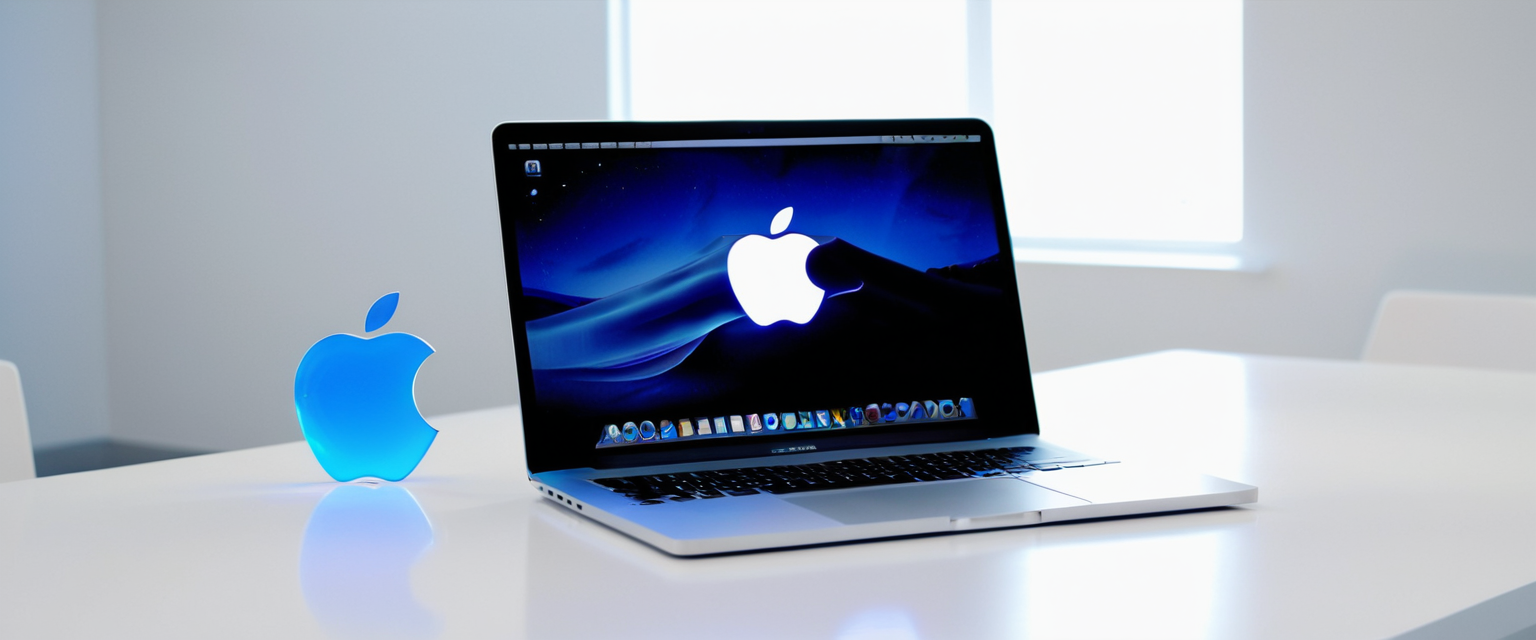
The question of whether Macs require antivirus protection remains one of the most debated topics in cybersecurity, with expert opinions ranging from cautious advocacy for third-party solutions to dismissal of antivirus as unnecessary and counterproductive. While macOS has traditionally been perceived as inherently secure compared to Windows systems, the landscape has shifted dramatically in recent years as cybercriminals increasingly recognize the platform’s growing market share and user base as profitable targets. Apple’s built-in security features provide a robust foundational layer of protection through technologies including XProtect, Gatekeeper, Notarization, and FileVault encryption, yet security researchers and threat intelligence analysts report unprecedented levels of malware development specifically targeting macOS systems. The answer to whether Macs need antivirus depends significantly on individual user profiles, organizational contexts, and risk tolerance, requiring a nuanced understanding of both the capabilities and limitations of native macOS security measures alongside the genuine threats that now target Apple’s operating system.
The Evolution of Mac Security Perceptions and Misconceptions
The widely held belief that Macintosh computers are immune to viruses and malware represents one of the most persistent and potentially dangerous misconceptions in personal computing security. This perception originated from multiple factors that genuinely positioned Macs favorably compared to Windows systems during earlier decades of computing, including the relatively closed nature of macOS’s architecture, the much smaller market share that made Macs less attractive targets for malware development, and Apple’s careful management of software distribution through controlled channels. However, this historical advantage has eroded as macOS has gained significant adoption both among consumers and enterprises, making it an increasingly lucrative target for sophisticated cybercriminals who now invest substantial resources in developing Mac-specific malware. The fundamental misunderstanding lies in conflating lower historical attack volume with inherent invulnerability; Macs certainly faced fewer malware threats than Windows systems, but this reflected economic incentives rather than technical imperviousness to compromise.
The terminology surrounding Mac security requires careful clarification, as Apple systems do not technically get “viruses” in the traditional sense since true viruses are self-replicating programs that propagate without user intervention. Instead, Macs become infected with malware, a broader category encompassing viruses, trojan horses, worms, ransomware, adware, spyware, and various other malicious software. Macs can only become infected through specific vectors including security flaws in the operating system or applications, social engineering attacks such as phishing emails, downloading malicious third-party software from untrusted sources, visiting compromised websites, or opening malicious email attachments. The distinction between vulnerability and invulnerability is critical; while macOS possesses strong architectural foundations that make exploitation more difficult than on some competing platforms, no operating system is completely immune to determined attackers, particularly when those attacks combine technical sophistication with social engineering targeting human behavior rather than purely technical weaknesses.
macOS Built-In Security Architecture and Layered Defense
Apple has implemented a sophisticated multi-layered approach to malware defense that structures protections into three distinct stages, each designed to address threats at different points in an attack lifecycle. The first layer of defense focuses on preventing the launch or execution of malware before it can run, utilizing the Mac App Store as a carefully curated software distribution channel where all applications undergo security review before publication, combined with Gatekeeper and Notarization for applications distributed outside the official App Store. Gatekeeper verifies that downloaded applications are properly signed by known developers and have not been modified since distribution, while Notarization represents Apple’s malware scanning service that requires developers to submit applications for automated scanning before distribution. When a developer receives a notarization ticket from Apple’s systems, they typically attach this verification to their application so that Gatekeeper can verify and launch the app even when the computer lacks internet connectivity, providing both convenience and security through cryptographic verification.
The second defensive layer aims to block malware from running on customer systems through the combined operation of Gatekeeper, Notarization, and XProtect. Apple can issue revocation tickets for applications known to be malicious even if they were previously notarized, and macOS regularly checks for new revocation tickets in the background, often updating far more frequently than traditional virus signature updates. XProtect, Apple’s signature-based malware detection engine, continuously monitors for malicious content and automatically detects and blocks execution of known malware. XProtect uses YARA signatures, sophisticated pattern-matching rules that describe malware families based on shared code or text patterns rather than requiring exact file hashes, enabling the system to identify variants of known malware even when the malicious code has been slightly modified. In macOS 10.15 (Catalina) and later versions, XProtect performs checks whenever an application is first launched, whenever a monitored application has changed in the file system, and whenever XProtect signatures are updated, ensuring continuous monitoring without requiring users to manually initiate scans.
The third defensive layer addresses remediation of malware that has managed to successfully execute on a Mac system. XProtect includes advanced remediation engines that process updates automatically delivered from Apple as part of regular security updates, actively removing malware upon receiving updated information and continuing to periodically check for infections throughout system operation. Beyond signature-based detection, XProtect incorporates an advanced engine designed to detect unknown malware through behavioral analysis, identifying suspicious activities and patterns that indicate malicious operations even when the underlying code is completely novel to the system. This behavioral detection capability represents a significant advancement, as it can identify zero-day threats and sophisticated malware that has been specifically engineered to evade signature-based detection through code obfuscation or other evasion techniques.
Supporting these three primary defense layers, macOS incorporates additional security mechanisms including FileVault 2 encryption that protects data on storage drives using hardware-level encryption with keys protected by Apple’s Secure Enclave processing unit. System Integrity Protection (SIP) prevents even administrative users and system processes from modifying protected system files and locations, creating an immutable core of the operating system that resists tampering. Secure Boot verifies that only cryptographically certified versions of macOS launch at startup, and Signed System Volume ensures the operating system’s integrity is protected even during runtime operations. The Secure Enclave, available on Macs with Apple silicon, provides isolated processing for sensitive operations and credential storage, making it extraordinarily difficult for malware to extract encryption keys or biometric authentication data even if malware achieves system-level access.
Despite these substantial built-in protections, security researchers and threat intelligence organizations have identified meaningful limitations in macOS’s native defenses. XProtect relies on signature-based detection, meaning it can only identify malware for which Apple has already created a detection signature, making it fundamentally reactive rather than proactive in addressing completely novel threats. The process of identifying new malware samples, analyzing them, developing signatures, and distributing those signatures to all Mac users worldwide requires time, during which new malware variants remain undetected on unpatched systems. Additionally, Gatekeeper has faced multiple bypass vulnerabilities over the years, with researchers discovering that certain third-party utilities and Apple’s native command-line tools do not properly enforce the quarantine attribute that Gatekeeper relies upon, potentially allowing malware to circumvent this protective mechanism. The September 2024 release of macOS Sequoia did address one significant Gatekeeper bypass method commonly exploited by stealer malware families, yet adversaries have quickly adapted by discovering alternative distribution mechanisms including shell scripts and masquerading malware as legitimate development tools like Homebrew.
The Escalating Threat Landscape Targeting macOS
The security landscape for macOS has undergone dramatic transformation in recent years, with threat researchers documenting an alarming increase in malware development specifically targeting Apple’s operating system. A comprehensive analysis of threat data from 2024 reveals a shocking 400 percent increase in macOS threats compared to 2023, driven substantially by proliferation of stealer malware families including Atomic, Poseidon, Banshee, and Cuckoo stealers specifically optimized for macOS. An even more dramatic data point indicates that 2021 witnessed a 1,000 percent increase in Mac-targeted malicious programs compared to the previous year, fundamentally shifting the threat calculus for Mac users who had previously assumed relative safety. Furthermore, 2025 has seen a shocking 73 percent increase in Mac malware incidents compared to 2024, representing continuous acceleration in targeting of macOS systems by sophisticated threat actors.
The composition of Mac malware threats reflects deliberate diversification by cybercriminals seeking maximum impact and monetization potential. Jamf Threat Labs analysis of the most common macOS malware in 2024 identified infostealers as the dominant threat category at 28.36 percent of detected malware, followed immediately by adware at 28.13 percent, with trojans comprising 16.61 percent and potentially unwanted programs at 15.06 percent. These stealer families particularly focus on harvesting sensitive information from compromised systems, including passwords stored in browser credential managers, cryptocurrency wallet information, iCloud keychain data, and browser session cookies that could enable authentication bypass on various online services. The rise of infostealers reflects a sophisticated business model where cybercriminals prioritize data theft for subsequent sale to other threat actors or fraudsters, potentially leading to credential compromise, financial fraud, cryptocurrency theft, and identity exploitation.
Ransomware has emerged as an increasingly destructive threat targeting macOS systems, with sophisticated families including KeRanger (discovered in 2016), EvilQuest (2020), and the recently identified NotLockBit (2024) specifically engineered to encrypt Mac user data and demand cryptocurrency ransom for decryption key recovery. NotLockBit represents a particularly concerning evolution, as this ransomware family was specifically adapted to exploit vulnerabilities in macOS security features and even targets the unique hardware security of Apple’s M1 and M2 chips, indicating that threat actors have invested substantial resources in understanding Apple silicon security architecture. Recent campaigns distributing the ClickFix social engineering technique have successfully targeted macOS users throughout 2025, tricking victims into executing commands that download and run the ATOMIC macOS Stealer (AMOS) malware family by impersonating legitimate companies and presenting fake verification steps.
The distribution mechanisms for modern Mac malware demonstrate increasing sophistication and willingness of threat actors to invest in social engineering alongside technical payload development. Most Mac malware in 2024 arrived through disk image (DMG) files containing the malware payload, often coupled with instructions directing victims to right-click on the downloaded software and select “Open,” a technique deliberately designed to bypass Gatekeeper’s security checks for unsigned software. Once executed, many stealer variants prompt the user for their administrator password using AppleScript dialog boxes that explicitly request or imply the need to supply credentials for “system changes,” with the dual objective of obtaining the password itself and accessing elevated permissions through sudo commands. The macOS Transparency, Consent, and Control (TCC) framework, which displays security prompts requesting user permission to access sensitive data such as keychain contents or contact information, provides insufficient protection against informed social engineering, as users who have already been deceived into executing malware then grant permission requests that appear to be system-generated.
Protect Your Digital Life with Activate Security
Get 14 powerful security tools in one comprehensive suite. VPN, antivirus, password manager, dark web monitoring, and more.
Get Protected Now
Evaluating Third-Party Antivirus: Protection Versus Complications
The debate over whether third-party antivirus protection provides genuine security benefits for macOS users versus creating operational complications remains contentious, with different perspectives reflecting distinct threat models and use cases. Proponents of third-party antivirus solutions argue that additional protection layers provide complementary benefits beyond Apple’s native defenses, particularly for detecting emerging threats before Apple’s signature databases receive updates. Third-party malware detection tools leverage dedicated research teams whose full-time focus involves analyzing macOS malware samples, developing detection methodologies, and distributing updates on accelerated schedules compared to Apple’s broader operating system release cycles. Modern antivirus solutions employ sophisticated detection techniques beyond pure signature matching, including behavioral analysis engines that identify suspicious activities irrespective of whether the underlying malware is completely novel, machine learning models trained on extensive datasets to identify malicious code patterns, heuristic analysis that recognizes characteristics of potentially dangerous software, and sandboxed execution that runs suspicious files in isolated environments to observe their behavior without risk to the host system.
Additionally, third-party security solutions can provide integrated endpoint protection capabilities valuable in organizational contexts, including centralized management consoles enabling IT administrators to deploy security policies across entire device fleets, real-time monitoring and logging of security events for incident response purposes, integration with existing enterprise security infrastructure including firewalls and intrusion detection systems, and forensic capabilities for investigating suspected compromises. Organizations managing heterogeneous environments with Windows, Linux, and macOS systems can benefit from unified security approaches where the same vendor provides consistent protection across diverse platforms, ensuring security policies remain consistent and simplifying management overhead. For organizations handling sensitive data or operating in regulated industries, the additional layer of protection provided by third-party solutions may be mandated by compliance frameworks or risk management policies, even if the incremental risk reduction is modest.
However, substantial evidence indicates that always-on third-party antivirus solutions create meaningful operational complications for macOS users, potentially introducing performance degradation and security risks that may exceed their protective benefits. Apple community experts and official Apple documentation consistently advise against installing traditional always-on antivirus software, emphasizing that such applications frequently interfere with normal macOS operation, cause performance issues including increased CPU and memory usage, create stability problems that make macOS appear buggy or unreliable, and sometimes introduce their own security vulnerabilities. Many antivirus applications require kernel extensions to function, and kernel extensions by definition reduce the security of the operating system by providing untrusted code execution at a privileged level where a vulnerability could compromise the entire system. Historical instances demonstrate that third-party security software has erroneously deleted components of macOS itself, misidentified legitimate system processes as malware, and created persistent operational problems that required extensive remediation by IT professionals.
A particularly important consideration involves the data collection and monetization practices of some third-party security vendors. Multiple documented instances reveal that antivirus companies have collected user browsing history, web purchasing information, and personally identifiable data without transparent disclosure in end-user license agreements, subsequently selling this metadata to marketing firms and data brokers. One well-known security vendor was specifically fined not for collecting and reselling this data—which they disclosed in fine print of their EULA—but because they failed to adequately inform users of these practices. Additionally, some security software vendors have been found to exploit TCC permissions or other macOS security features in ways that reduce user privacy rather than enhance security, undermining the privacy protections built into macOS itself. These business model concerns suggest that users installing third-party security software sometimes trade genuine privacy risks for perceived security benefits, a problematic calculation particularly for privacy-conscious users.
User Behavior and Social Engineering as Critical Risk Factors
Regardless of technical security implementation, the fundamental weakness in any security architecture involves the human element of decision-making and behavior. Cybersecurity professionals have consistently observed that social engineering attacks succeed against macOS users with similar frequency as they succeed against Windows users, as both user populations exhibit comparable vulnerability to phishing emails, deceptive websites, malicious advertisements, and fraudulent software distribution channels. A 2025 report indicated that over 90 percent of cyber attacks originate from phishing attempts, establishing social engineering as the primary attack vector regardless of operating system. The success of sophisticated malware campaigns like ThiefBucket, where North Korean threat actors (Lazarus Group) successfully lured job seekers into downloading malware through seemingly legitimate coding challenge exercises, demonstrates that macOS users are not more resistant to being deceived than any other user population, and that no technical security control can entirely compensate for user judgment failures.
The psychological phenomenon where Mac users believe their systems are inherently secure and therefore less vulnerable to compromise creates a particularly dangerous form of complacency that actually increases rather than decreases infection risk. Users operating under the assumption that their Mac is somehow invulnerable may exercise less caution when downloading software, clicking suspicious links, or granting permissions to applications, paradoxically increasing their vulnerability compared to users who maintain realistic threat awareness. The misconception that Macs are immune to compromise also correlates with lower likelihood of keeping systems updated, as users may deprioritize security patches based on false confidence in platform immunity rather than recognizing that patches address genuine vulnerabilities being actively exploited by malicious actors. This dynamic suggests that accurate threat awareness and user education regarding actual macOS security vulnerabilities may provide more protective benefit than any incremental technical security control, as informed users make better decisions about software sources, credential protection, and suspicious communications.
Practical Guidance on Antivirus Decisions for Different User Profiles
The appropriate security strategy for any given macOS user depends substantially on their specific threat model, usage patterns, technical sophistication, and organizational context rather than yielding a single universal recommendation applicable to all Mac users. For individual consumers with typical usage patterns who practice reasonable digital hygiene, the built-in macOS security features provide adequate protection against the vast majority of threats without requiring additional software. These users should prioritize the following practices above installation of additional security software: maintaining current macOS and application updates through automatic update features, downloading software only from official sources including the Mac App Store or vendor websites, exercising caution with email attachments and links from unknown senders, and maintaining regular backups of critical data through Time Machine or alternative backup solutions. For users with minimal technical risk profile and careful computing practices, the performance overhead and potential complications introduced by always-on antivirus solutions likely provide negative net security value.
Users with elevated personal risk profiles, including those who frequently download software from unfamiliar sources, visit potentially dangerous websites, or conduct sensitive financial transactions online, may benefit from occasional scanning using on-demand antivirus tools rather than always-on protection. Tools like Malwarebytes provide substantial malware detection and removal capabilities through on-demand scanning without requiring continuous background operation or kernel-level access, offering flexibility to run scans when suspected compromise has occurred or as periodic precautionary checks. This approach provides detection capabilities for emerging threats while avoiding the performance overhead and potential compatibility issues of continuously running security software. Users who suspect active malware infection should disconnect from the internet immediately to prevent malware communication with attacker-controlled servers, update macOS to the latest version to patch potential vulnerabilities, run comprehensive antivirus scans from trusted security tools, and change passwords for important online accounts once their Mac is confirmed clean.
Organizational IT teams managing enterprise Mac deployments face fundamentally different security considerations than individual consumers and should implement comprehensive endpoint protection strategies beyond relying solely on native macOS security features. Enterprise deployments benefit from Mobile Device Management (MDM) solutions enabling centralized enforcement of security policies, real-time monitoring and alerting on suspicious device activity, automatic deployment of security configurations and updates, and integration with enterprise identity and access control systems. Organizations should implement zero-touch onboarding processes where new Macs automatically enroll in MDM upon initial setup, ensuring devices are configured with appropriate security controls before users gain access to corporate systems and data. FileVault encryption should be mandated on all corporate Macs through MDM policy, with recovery keys stored securely in enterprise systems rather than relying on user-managed recovery codes that may be lost or compromised. Enterprise organizations should deploy Apple-native identity solutions including SSO (single sign-on) integration and Conditional Access policies that restrict access to sensitive resources based on device security posture assessment including encryption status, operating system version currency, and malware detection status.

Detection Methodologies: Signature-Based Versus Behavioral Approaches
Understanding the technical distinctions between signature-based and behavior-based malware detection provides essential context for evaluating effectiveness of both native macOS protections and third-party security solutions. Signature-based detection, employed by XProtect and many traditional antivirus solutions, identifies malware through pattern matching against known threat databases, utilizing techniques including file hash matching, YARA rules describing malware families based on shared code characteristics, and string pattern recognition across file contents. This approach excels at rapidly blocking well-known commodity threats with minimal computational requirements and near-zero false positive rates on recognized malware, providing efficient protection against threats for which samples have already been collected and analyzed. However, signature-based detection inherently exhibits reactive rather than proactive characteristics, as detection signatures can only be created after malware samples have been acquired, analyzed, and added to threat databases, requiring time measured in hours or days before new malware variants receive detection coverage. The speed advantage of signature matching comes at the cost of blindness to completely novel threats; if malware has been specifically engineered to evade known signatures through code obfuscation, polymorphism that changes the malware’s signature with each infection, or entirely new malicious code targeting novel vulnerabilities, signature-based detection will fail to identify the threat.
Behavior-based detection operates through fundamentally different principles, establishing baselines of normal user, process, and system activity, then flagging deviations that appear anomalous regardless of whether underlying code matches any known malware signature. Behavioral engines analyze process behaviors, memory manipulation patterns, network communications characteristics, file system activity, and user actions, identifying suspicious combinations that indicate malicious intent even when the specific implementation is completely novel to security researchers. Machine learning and artificial intelligence technologies enhance behavioral detection by assigning behavioral scores to activities and establishing contextual correlations that help distinguish genuinely suspicious behavior from legitimate operations that might otherwise trigger false alarms. This proactive approach enables detection of zero-day vulnerabilities, fileless malware that executes purely in memory without writing to persistent storage, living-off-the-land techniques that abuse legitimate system utilities for malicious purposes, and sophisticated malware specifically engineered to evade signature-based detection.
The trade-offs between signature-based and behavioral detection approaches present a classic security dilemma without universally optimal resolution. Signature-based systems provide speed and efficiency with minimal false positive rates, making them valuable components of layered defense that quickly eliminate known threats while allowing security teams to focus on more sophisticated threats requiring deeper analysis. Behavioral systems initially require longer to establish baselines and may generate higher false positive rates during the learning phase, but provide protection against novel threats that would completely escape signature-based detection. The most sophisticated modern security platforms combine both approaches, deploying signature-based engines as the first line of rapid defense against known threats while maintaining behavioral monitoring systems that identify the anomalous activities suggesting new, unrecognized malware regardless of signature matching results. Apple’s XProtect incorporates both capabilities, utilizing YARA signatures for known malware while also incorporating behavioral analysis engines designed to detect unknown malware based on suspicious activity patterns.
Enterprise Considerations and Security Parity Across Platforms
Organizations operating heterogeneous computing environments incorporating Windows, Linux, and macOS systems face distinct security challenges in maintaining consistent protection standards across diverse platforms while adapting to the unique security architectures and management capabilities of each operating system. While macOS does provide superior out-of-the-box security compared to Windows, enterprise security parity does not mean achieving identical security postures across platforms, but rather maintaining consistent security effectiveness that reflects each platform’s actual risk exposure and threat landscape. Enterprise IT teams should establish security baselines for macOS systems that ensure all devices maintain current operating system versions, FileVault encryption is universally enabled with recovery keys stored in enterprise systems, firewall protection is activated with appropriate inbound connection policies, and XProtect and other native protections remain enabled and receiving automatic updates.
The 2024 Forrester study commissioned by Apple demonstrated that Mac deployments in enterprise environments achieve measurable cost reductions across device support, management, and operational licensing when compared to PC-dominant environments, with built-in cybersecurity features reducing the need for additional third-party security applications. Over a five-year evaluation period, each deployed Mac delivered approximately $550 in total cost of ownership savings compared to equivalent PC deployments, with significant contributions from reduced security incident response requirements, lower help desk support demand, and fewer compatibility issues arising from security software installation. These economic benefits reflect both the genuine security advantages of macOS architecture and the operational efficiencies that accrue when security controls are built into the platform rather than bolted on through third-party solutions.
However, organizational risk profiles vary substantially, and some enterprises may rationally decide that additional endpoint protection layers provide justified benefits even accounting for management complexity and potential performance overhead. Organizations operating in highly regulated industries including healthcare, financial services, and government may find that compliance frameworks or customer expectations require comprehensive endpoint protection strategies extending beyond native OS capabilities. Organizations with extensive BYOD (bring-your-own-device) programs face heightened risks from unmanaged personal devices, making additional monitoring and protection capabilities valuable investments despite their costs. Organizations experiencing active targeted attacks or sophisticated threat campaigns may rationally deploy advanced threat protection technologies including behavioral monitoring and threat hunting capabilities that exceed capabilities of standard platform protections.
Emerging Threats and Evolving Attack Methodologies
The macOS threat landscape continues to evolve with accelerating sophistication, incorporating tactics previously associated primarily with Windows malware and demonstrating organized cybercriminal investment in macOS-specific capabilities. The 2025 emergence of cross-platform attack campaigns utilizing techniques like ClickFix social engineering to target both Windows and macOS systems indicates that threat actors view macOS as sufficiently valuable to justify unified campaign frameworks, representing fundamental departure from previous paradigms where Windows and macOS threats diverged substantially. UNC5142, a threat cluster attributed to cybercriminals with demonstrated cross-platform capabilities, has successfully distributed macOS-specific variants of infostealer malware including ATOMIC and AMOS throughout 2025, deliberately customizing social engineering lures and payload delivery mechanisms to exploit macOS users’ specific behaviors and security assumptions.
The acceleration of artificial intelligence adoption by threat actors presents emerging challenges not yet fully reflected in current security implementations. Cybercriminals are beginning to develop AI-driven malware generation tools that automatically create polymorphic malware variants designed to evade signature-based detection, and sophisticated social engineering campaigns leveraging AI-generated deepfakes and personalized phishing content that dramatically increase successful deception rates. Concurrently, enterprise security teams are deploying AI-enhanced threat detection and automated response capabilities that analyze behavioral anomalies and contextual information at scales and speeds infeasible through traditional manual analysis, representing the next evolution of behavioral protection methodologies.
The discovery of zero-day vulnerabilities affecting macOS in 2025 demonstrates that even Apple’s advanced security architecture remains subject to previously unknown flaws that determined attackers can exploit. CVE-2025-43300, affecting iOS, iPadOS, and macOS through a vulnerability in the ImageIO framework, was actively exploited in targeted attacks against select individuals before public disclosure and patching, highlighting that sophisticated threat actors continue discovering and weaponizing vulnerabilities before Apple becomes aware. The increasing volume of newly discovered vulnerabilities, with 2025 averaging 130+ CVEs per day compared to 113 in 2024, indicates an accelerating rate of security flaw discovery that outpaces patching capacity, creating windows of exposure during which known vulnerabilities remain unpatched on many systems. This evolving vulnerability landscape suggests that traditional reactive patching approaches may become increasingly insufficient, necessitating more proactive threat detection and response capabilities that can identify exploitation attempts even for known vulnerabilities before patches are deployed.

Comprehensive Security Recommendations and Best Practices
Effective macOS security requires multilayered approaches combining technical controls, user behavior and awareness, organizational policies, and vendor support rather than relying on any single security mechanism including antivirus software. All Mac users should implement core protective practices including enabling automatic macOS and application updates through System Settings, utilizing strong and unique passwords for important accounts protected through iCloud Keychain or equivalent password managers, enabling FileVault encryption particularly on portable devices, enabling firewall protection through macOS built-in firewall settings, configuring two-factor authentication on all accounts supporting this capability, and maintaining current backups of critical data through Time Machine or equivalent solutions. Users should download software exclusively from official sources including the Mac App Store or developer websites rather than arbitrary internet sources, exercise caution with email attachments and links particularly from unknown senders, and avoid granting administrator password access unless absolutely necessary for specific system changes.
Technically advanced users and security-conscious individuals might rationally maintain current versions of on-demand antivirus tools including Malwarebytes for occasional scanning, running these tools periodically or when suspicious system activity is suspected rather than keeping them continuously active. However, the evidence does not support running always-on third-party antivirus solutions for most individual users, as performance overhead and potential compatibility issues typically outweigh incremental protective benefits given macOS’s native capabilities and user behavioral practices. Users should maintain realistic threat awareness acknowledging that macOS systems can be compromised and require vigilance rather than assuming inherent invulnerability, practice good computing hygiene including careful download source selection and cautious interaction with suspicious communications, and maintain current knowledge of evolving threats rather than relying on outdated assumptions about platform immunity.
Organizations should establish formal macOS security policies establishing baseline requirements including mandatory FileVault encryption, firewall configuration standards, software installation policies restricting applications to approved sources, and regular security scanning through appropriate endpoint protection tools if risk assessment justifies such measures. MDM (Mobile Device Management) deployment should be universal across organizational Mac deployments, enabling centralized policy enforcement, automatic patching, device compliance verification, and incident response capabilities. Organizations should implement conditional access policies that restrict access to sensitive systems and data based on device security posture assessment including encryption status, OS version currency, and malware detection results. User awareness and training regarding phishing detection, password security, and reasonable caution when downloading software or interacting with suspicious communications should receive priority equal to or exceeding technical security control implementation, as user behavior ultimately determines the effectiveness of organizational security programs.
The Verdict on Mac Antivirus
The answer to whether Macs need antivirus software proves more nuanced than categorical yes-or-no recommendations, requiring individual assessment of specific threat models, usage patterns, organizational contexts, and risk tolerance. macOS provides genuinely robust built-in security features through XProtect, Gatekeeper, Notarization, FileVault encryption, and System Integrity Protection that deliver strong foundational protection against malware and unauthorized access for the vast majority of typical users. The historically lower malware infection rates on Mac systems reflect not only superior architectural security but also the results of these comprehensive native protections operating across the installed base, suggesting that for most users, native protections combined with reasonable computing practices provide sufficient security without additional software.
However, the genuine and accelerating threat landscape targeting macOS demands acknowledgment that no operating system is completely immune to compromise, and that deliberate avoidance of antivirus consideration based on outdated assumptions about platform invulnerability represents dangerous complacency rather than informed security strategy. Organizations managing sensitive data, individuals with elevated risk profiles, and users engaging in higher-risk computing activities including frequent software downloads or sensitive financial transactions may rationally justify third-party security tools despite their complications and costs. The decision regarding antivirus implementation should emerge from systematic risk assessment rather than categorical assumptions, weighing the specific threats relevant to individual circumstances against the operational costs and potential complications of additional security software.
For individual consumers practicing good computing hygiene and careful download source selection, Apple’s built-in defenses supplemented by user behavior and awareness typically provide adequate protection without requiring third-party antivirus solutions. For organizations managing enterprise Mac deployments, comprehensive endpoint protection strategies incorporating MDM, device compliance enforcement, and behavioral threat monitoring represent justified investments that provide protective benefits exceeding the operational overhead and management complexity they introduce. For all Mac users regardless of specific circumstances, prioritizing regular security updates, maintaining realistic threat awareness, exercising caution when downloading software and interacting with suspicious communications, and maintaining current backups of critical data should rank equal to or above antivirus considerations in security prioritization. The fundamental security principle applicable across all user populations and organizations acknowledges that security represents a layered, continuous process rather than a product, requiring sustained vigilance, regular reassessment as threats evolve, and balanced integration of technical controls with user behavior and organizational policies.






